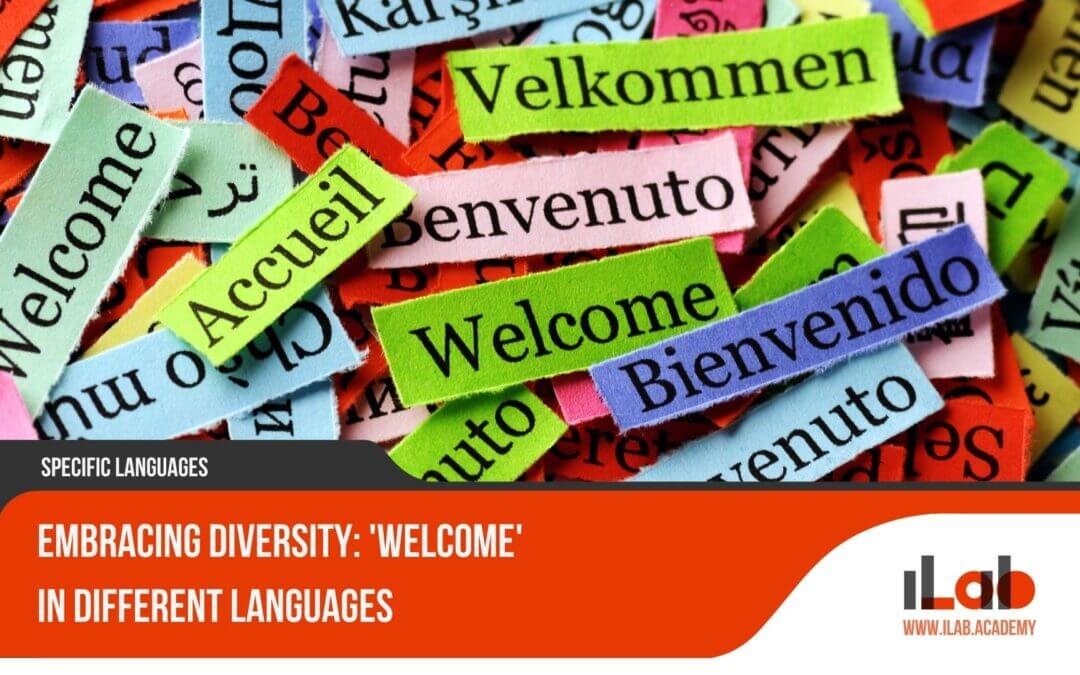Table of contents
Is there really a definitive “hardest language” to learn? As someone who’s always been fascinated by the art of language, I’ve come to realize it’s not a one-size-fits-all answer. For me, the challenge lies in how different a new language is from my own. I’m drawn to the intricacies that each language presents, from the complex grammar of Hungarian to the tonal puzzles of Mandarin. As I share my insights, I’ll take you through the factors that contribute to a language’s difficulty, such as unfamiliar alphabets and the particularities of pronunciation. Let’s dive into the linguistic depths, where we’ll look at what can make a language seem insurmountable to learners and how personal experience shapes this learning journey.
Key Takeaways
- Language learning difficulty is subjective and varies based on factors such as the learner’s native language, linguistic knowledge, and personal aptitude.
- Grammatical complexity, including aspects like gender cases, verb conjugations, tense usage, and sentence structures, can contribute to the difficulty of learning a language.
- Writing systems and pronunciation challenges, such as unfamiliar scripts or unique pronunciation rules, can pose additional hurdles for language learners.
- Languages that have concepts and cultural nuances that are hard to translate or are absent in other languages can be particularly challenging to achieve proficiency in.
The Subjective Nature of Language Learning Difficulty
Determining the single hardest language to learn is a subjective endeavor, as my linguistic background heavily influences the level of difficulty I’ll encounter. If I’m a native English speaker, for instance, learning Spanish might come easier to me than Mandarin. That’s not just because of vocabulary or grammar, it’s due to something called linguistic distance—the gap between my native language and the new language I’m trying to pick up.
Languages bunch into families, like relatives at a reunion. They share traits, quirks, and sometimes vocabulary. If my mother tongue is part of the Germanic language family, I’ll likely have an easier time grasping Dutch or German. But if I leap across the language family tree to tackle a Slavic or Baltic language, the challenge intensifies.
It’s not just about the family ties, though. My personal knack for languages plays a role. Some folks have a sharp ear for tones, making tonal languages like Thai less intimidating. Others excel at memorizing characters, which can be a boon when learning scripts like the Chinese hanzi.
But why is this important? Understanding the subjective nature of language learning difficulty helps set realistic expectations. It also encourages language learners to find the right resources and strategies. Knowing that my journey with Japanese might be tougher than with Italian, because of the stark differences to English, means I can prepare better for what lies ahead. I can arm myself with patience, tailored learning materials, and maybe even a tutor who understands the unique hurdles I’ll face. It’s a personalized language-learning battle plan. And it starts with acknowledging that there’s no one-size-fits-all hardest language, just the one that’s toughest for me.
Grammatical Complexity and Language Difficulty
Why do I struggle more with some languages’ grammar than others? It’s often because every language has its unique grammatical structure, and the further that structure deviates from my mother tongue, the steeper the learning curve. Some languages, for instance, include gender cases that affect nouns, adjectives, and articles. I’m not just learning vocabulary; I’m learning a new way of categorizing and relating words to each other.
Then there’s verb conjugation. In English, I deal with a relatively straightforward set of verb changes. But in languages like Spanish or French, verbs can change form for each person and number, not to mention different tenses and moods. It’s like piecing together a complex puzzle where each piece changes shape depending on its neighbors.
Tense usage is another area that can trip me up. English uses a handful of tenses, but when I started learning Turkish, I encountered a mind-boggling array of verb tenses and aspects. And let’s not forget sentence structure. The subject-verb-object order I’m so used to in English gets turned on its head in languages like Japanese, where the verb typically comes at the end. It’s all about retraining my brain to process information in a new way.
Understanding grammatical complexity is crucial because it explains why I might find some languages harder to learn than others. It’s not just about memorizing rules; it’s about changing the way I think about communication. The more I practice, the more intuitive these once-foreign concepts become, transforming my struggles into second nature.
Writing Systems and Pronunciation Challenges
Beyond grappling with grammar, I’m also faced with the daunting task of mastering new writing systems and pronunciation patterns that often differ wildly from those in English. While the Latin alphabet is like an old friend, scripts like Mandarin’s logograms, the Arabic script, or Japanese kanji and kana feel like strangers that don’t share any common ground. Each character in these systems can represent a word or a sound, a concept that’s foreign to an alphabet where letters mostly represent individual sounds.
Learning to write in these scripts isn’t just about memorization; it’s about understanding a completely different set of rules. For instance, Mandarin Chinese requires me to learn thousands of characters, each with its own stroke order. The Arabic script, written right to left, challenges me with its cursive style and the way letters change shape depending on their position in a word.
Pronunciation presents its own set of hurdles. Tones in Mandarin, guttural sounds in Arabic, and the pitch accent in Japanese are just a few examples of pronunciation features that can trip up English speakers like me. These are not just about learning new sounds; they’re about training my ear and voice to differentiate and produce subtle variations that can change the meaning of words.
As I push through these challenges, I realize that language is more than just words and rules—it’s a reflection of culture. This brings me to another layer of complexity: languages that defy translation due to their conceptual and cultural intricacies.
Languages That Defy Translation: Conceptual and Cultural Challenges
Grasping the subtle intricacies of languages steeped in unique cultures, I’m often struck by the realization that some concepts simply resist direct translation. It’s not just about finding the right words; it’s about understanding a whole cultural context that shapes the meaning.
Take idiomatic expressions, for example. They’re often so deeply rooted in culture and history that they lose their flavor and meaning outside of their native linguistic soil. When I try to translate the Japanese idiom “猫に小判” (neko ni koban), which means giving gold coins to a cat, it doesn’t quite resonate in English the way it’s intended. It’s meant to describe an action that’s a waste, as a cat can’t appreciate the value of money, but the nuance is anchored in Japanese culture.
Politeness levels and honorifics are another area where language gets tricky. In Korean, the verb endings change based on the social status of the person you’re speaking to. This isn’t just grammar—it’s a reflection of societal values and relationships. As an English speaker, I’m not just learning how to conjugate a verb; I’m learning how to navigate social hierarchies.
Then there’s the challenge of cultural context. Words can be chameleons, changing their meaning based on cultural cues that a dictionary can’t provide. In Russian, “тоска” (toska) expresses a deep spiritual anguish. It’s not just sadness; it’s a profound soulful longing, a concept that doesn’t neatly package into an English equivalent.
Notoriously Difficult Languages for English Speakers
In my quest to master new languages, five stand out as particularly daunting for native English speakers: Mandarin Chinese, Arabic, Japanese, Russian, and Hungarian, each presenting a unique set of linguistic hurdles. Mandarin’s tones can be a real curveball; the difference in pitch can change the meaning of a word entirely. It’s not just about pronunciation either—Mandarin’s logographic writing system is a far cry from the familiar Latin alphabet.
Then there’s Arabic, with its script that reads right to left and includes sounds that don’t exist in English. Its complex verb systems and the use of vowels as diacritics rather than letters add to the challenge.
Japanese might hook you with its anime and manga, but it won’t go easy on you. It juggles three writing systems: kanji, hiragana, and katakana. Plus, the language’s intricate honorific system reflects deep societal respect hierarchies, making polite conversation a strategic exercise.
Russian, with its Cyrillic alphabet and numerous cases for nouns, can be a tough nut to crack. The grammar isn’t just different; it requires a new way of thinking about sentence structure and the relationships between words.
Lastly, Hungarian, a language unrelated to most European tongues, boasts a vocabulary and grammar that can seem alien to an English speaker. It features up to 18 cases and a sentence structure that feels like assembling a puzzle with extra pieces.
For English speakers, these languages aren’t just learning a new way of speaking; they’re learning a new way of thinking. But don’t let that deter you—each represents a rich cultural world waiting to be explored.
Learning Resources and Accessibility
As I’ve delved into various languages, I’ve noticed that the abundance and quality of learning resources can significantly influence the difficulty of becoming proficient. It’s clear that not all languages are on equal footing when it comes to the resources available for learners. For widely spoken languages like Spanish or French, I’ve found an overwhelming amount of materials: textbooks, apps, movies, and even entire websites dedicated to teaching the language. However, for less commonly studied languages, the scarcity of resources is a real barrier.
Here’s a breakdown of how this disparity impacts language learning:
- Availability of Learning Materials: Languages like Mandarin or Arabic might have resources, but they are often fewer than for European languages. This means fewer options for learners to find the method that works best for them.
- Quality of Instruction: Not all languages have the benefit of well-established teaching methodologies or trained instructors. This can make learning less structured and more challenging.
- Access to Practice Opportunities: Languages that are less prevalent globally don’t always provide many chances for immersion or conversation with native speakers, which is crucial for achieving fluency.
I’ve seen firsthand that a language’s learning curve isn’t just about its intrinsic complexity; it’s also about how easily you can access tools to help you climb that curve. It’s not just the grammar or vocabulary that’s daunting, but the hunt for a decent textbook or a reliable language partner can be just as intimidating. The digital age has started to level the playing field somewhat, with online platforms offering courses in a wider variety of languages, but there’s still a long way to go. For anyone embarking on learning a new language, it’s important to consider these factors, as they could be the difference between a rewarding journey and an uphill struggle.
Embracing the Challenge: Enhancing Language Learning Resilience
Although the journey to mastering a challenging language can be daunting, I’ve found that embracing the process with determination significantly boosts the likelihood of success. It’s not just about grappling with grammar or wrestling with writing systems; it’s about cultivating resilience. Tackling a difficult language is a marathon, not a sprint, and the right mindset can make all the difference.
To keep you intrigued and engaged, here’s a table that outlines key strategies for enhancing language learning resilience:
| Strategy | Description | Benefit |
|---|---|---|
| Community Engagement | Join language forums or local groups. | Social support, real-life practice. |
| Technological Aids | Utilize apps and online resources. | Interactive learning, convenience. |
| Dedicated Practice | Set aside daily time for language study. | Consistency, skill retention. |
| Growth Mindset | Embrace mistakes as learning opportunities. | Positive attitude, perseverance. |
By diving into language-learning communities, I’ve surrounded myself with fellow learners and native speakers who offer invaluable support and insight. I’ve also relied heavily on technological aids, from apps that gamify vocabulary acquisition to online courses that break down complex grammar.
I make a point of practicing every day, even if it’s just reviewing flashcards or listening to a podcast in the target language. This consistency helps keep the language fresh in my mind and gradually builds my proficiency.
Perhaps most importantly, I’ve learned to maintain a growth mindset. I treat setbacks as stepping stones and remind myself that every mistake is a chance to learn something new. The cognitive and personal benefits of learning a difficult language, like improved memory and problem-solving skills, are well worth the effort.
Frequently Asked Questions
How Does the Age of a Learner Impact the Ability to Learn a Hard Language?
I’ve found that my age affects my language learning ability. As a child, I absorbed new languages more naturally, but as an adult, it requires more effort. My brain isn’t as malleable, making it harder to mimic new sounds and remember complex grammar rules. However, I’ve got better discipline and study strategies now, which helps me tackle the challenge of learning a tough language despite the age-related difficulties.
Can Learning Multiple Languages Simultaneously Make It Easier or Harder to Learn a Difficult Language?
I’ve found that learning multiple languages at once can either simplify or complicate the process. It depends on how similar the languages are and my own capacity to manage them. If they’re related, recognizing patterns helps me learn faster. But if they’re vastly different, I risk getting overwhelmed or mixing them up. It’s a personal balance between challenge and confusion, and everyone’s experience will vary.
What Role Does Technology, Such as Language Learning Apps and Artificial Intelligence, Play in Simplifying the Process of Learning the Hardest Languages?
Technology, especially language learning apps and artificial intelligence, has been a game-changer for me. It simplifies learning tough languages by providing interactive lessons, immediate feedback, and personalized practice sessions. I’ve found that AI-driven pronunciation guides and real-time translation tools help me grasp complex concepts faster. This tech makes language learning more accessible, engaging, and effective, even when tackling languages that are notorious for their difficulty.
How Do Economic and Geopolitical Factors Influence the Global Interest in Learning Particular Languages, Regardless of Their Difficulty?
Economic and geopolitical shifts greatly shape my interest in learning new languages. If a country’s influence grows, I’m more inclined to study its language to tap into job opportunities or understand its culture better. For instance, as China’s economy booms, I’ve noticed more folks, including myself, are trying to learn Mandarin despite its complexity. It’s all about staying relevant and competitive in an ever-globalizing world.
Are There Any Psychological or Cognitive Advantages to Learning a Language Considered Harder Over One That Is Easier, Beyond Language Acquisition Itself?
I’ve often wondered if tackling a tougher language offers extra cognitive perks beyond just learning the language itself. It turns out, it does. Engaging with a more challenging language can sharpen my brain, improve multitasking skills, and even delay dementia. The mental gymnastics required to master complex grammar or a new writing system seem to give my brain a more intense workout than simpler languages would. It’s a tough but rewarding journey.
Conclusion
In the end, there’s no one-size-fits-all answer to the toughest language to learn. It’s a personal journey, shaped by your own linguistic background and tenacity. Whether it’s untangling Russian grammar or mastering Mandarin tones, the key is persistence and the right resources. So embrace the challenge, dive into diverse linguistic pools, and remember, every new language you conquer not only breaks barriers but also unlocks new worlds of understanding. Keep exploring, and you’ll keep growing.














